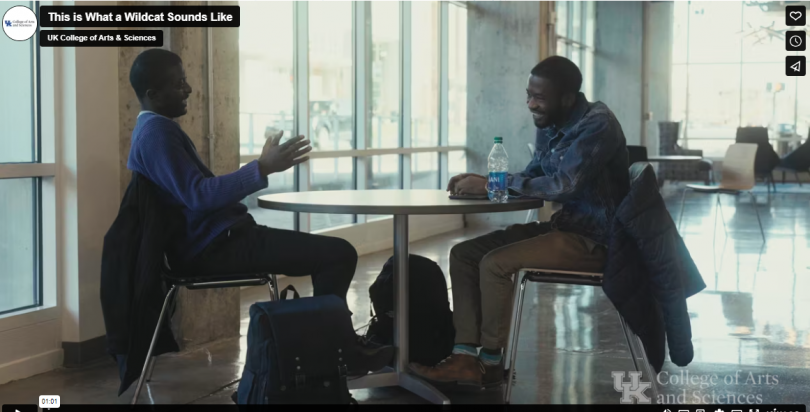By Richard LeComte

A recent initiative in the University of Kentucky Department of Linguistics delves into the many ways language is spoken and heard on a diverse college campus — “This is What a Wildcat Sounds Like.” The video creates a mosaic of what UK community members sound like when communicating and how that enriches the experience for all stakeholders on campus.
"The project began as an attempt to raise awareness of dialect diversity on this campus," said Allison Burkette, chair of the Linguistics Department in the UK College of Arts and Sciences. “I have seen a couple of other videos from other schools, and I thought it was important because there's been at least one dissertation and several articles written about it.”
One of the issues UK students face is feeling ill at ease because of the way they speak; the video tries to show them that they can fit in because of the many different accents heard on campus.
"For example, first-generation students coming to a college campus, especially if those students are from Appalachia, may not feel comfortable with the way that they talk," she said. “They don't feel comfortable speaking up in class. They don't feel comfortable talking to a professor because they're very conscious that they speak in a way that's different from some of their classmates.”
But one thing sociolinguists like Burkette try to teach is that diversity of language is natural and welcome.
"I believe very strongly that there's no right way or wrong way to use language,” she said. “This is simply what people do. They speak to express their identities, to express membership to different groups, to different communities or to their family. There's a lot of things wrapped up in the way that people talk. The last thing in the world I think any educator wants is for any child or student to feel like they can't ask the question that they want to ask or contribute to a conversation because they're insecure about their language use.”
The video features a series of students, faculty and community members saying “This is what a Wildcat sounds like” in a series of accents. It serves as an invitation for newcomers to join in academic conversation no matter what their words sound like.
UK’s Office of Diversity, Equity and Inclusion sent out an email asking for volunteers, especially from Arts & Sciences, Burkette said.
"The emails went out to department chairs and different groups across campus,” she said. “At least for this first video, we wanted to find a nice, wide, diverse range of people.”
In the fall, Burkette is looking to find other ways to create videos illustrating how Wildcats speak. But the first video hit the mark she was aiming for.
"As a linguist you kind of expect the unexpected, but this video came through,” she said. “I thought it depicts a really nice cross-section of people in the video, and I was very pleased with how it turned out.”
